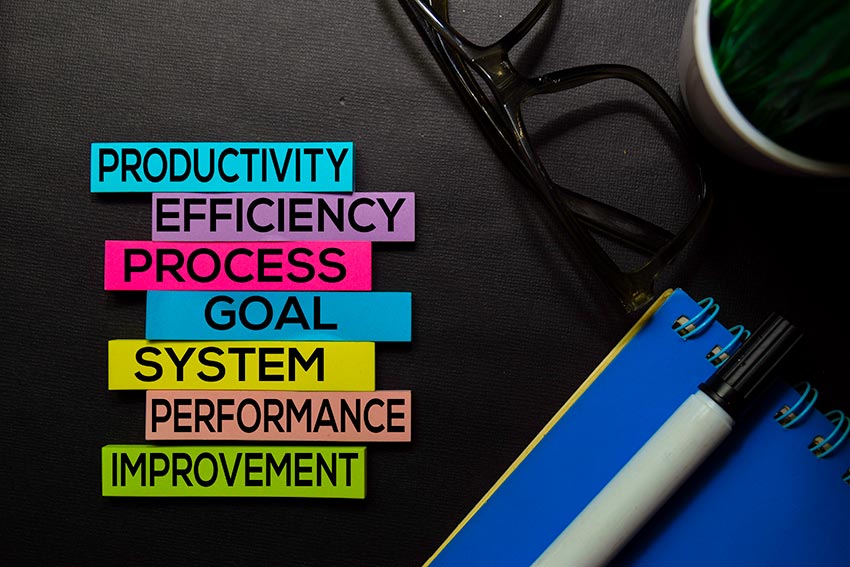Age inclusivity is good for workers and businesses. Older workers bring hard-earned skills and experience to the workplace and complement the abilities of younger workers. Plus, job turnover is lower in age-diverse workplaces because older workers are more loyal to their employees. For these reasons and more, the Organization for Economic Co-operation and Development (OCED) estimates that an increase in multigenerational workforces can raise GDP per capita by 19 percent over the next 30 years.

To build a more age-inclusive culture, employers need to be aware of ageism and age discrimination. Laws in the United States protect workers and applicants over 40 from unfair treatment based on age, although research shows that older people still experience age discrimination in the workplace (and beyond). This bias can come in many forms. For example, older workers may be the punchline of jokes, or they may get passed up for a job or promotion based on age. In any form, it’s wrong. By understanding age discrimination — and improving employment and culture practices in your workplace with age inclusivity in mind — you’ll create a more equitable and engaging environment for everyone on your team.
Celebrate the Aging Workforce
Older people are staying in the workplace longer, which is a good thing for everyone. In a 2019 Hiscox Ageism in the Workplace Study, 67 percent of the workers surveyed, who were between the ages of 40 and 65, said they plan to continue working after they turn 66.
In fact, the group of workers in the 65-and-older range has stayed in or reentered the workforce in greater numbers than any other age group in recent years, according to the Bureau of Labor Statistics (BLS).
The trend toward older workers remaining in the workforce may be here to stay. While BLS researchers in 2018 expected the percentage of workers between 25 to 54 to grow by only about 2 percent by 2050, they expected those in the 65-and-older range to increase by a whopping 75 percent!
However, the pandemic has hit older workers harder than other age groups. During the first 6 months of the pandemic, workers aged 55 and older were 17 percent more likely to lose their jobs than younger employees, according to the AARP. Plus, companies have hired back unemployed older workers more slowly.
Nonetheless, older workers will undoubtedly continue to make up a large part of the workplace, and it’s important for employers to do everything they can to create a more inclusive culture.
What You Need to Know About Ageism and Age Discrimination
Age discrimination, according to the U.S. Equal Employment Opportunity Commission, involves treating an applicant or employee less favorably because of their age. It’s specifically forbidden against people who are 40 and older by the federal Age Discrimination in Employment Act (ADEA), which Congress enacted in 1967. While discriminating against an employee younger than 40 because of their age isn’t right and may be prohibited in certain states, it’s not technically illegal on a federal level.
Aside from the fact that age bias can lead to discrimination lawsuits, it’s also bad for business. As with other forms of discrimination, it can cause valuable employees to lose confidence and motivation or even seek other employment. Diversity and inclusion, on the other hand, drive employee engagement.

If you work in an environment with lots of millennial (born between 1981 and 1996) and Generation Z (born between 1997 and 2012) employees, you may wonder how big a problem age bias against older workers is. Short answer? Big.
Although around 10,000 Baby Boomers (born between 1946 and 1964) retire every day, many want to stay in the workforce. In many cases, they have inadequate savings for retirement, so holding a paying job is more a necessity than a choice. Still, plenty of older workers continue to work for other reasons, such as personal fulfillment and the respect they earn in their jobs.
Do these workers receive the respect they deserve?
According to an AARP survey, two out of three workers older than 45 say they’ve seen or experienced age discrimination, and 76 percent of those workers view age discrimination as an obstacle to overcome when looking for a new job.
The number of age-related discrimination charges filed with employers and the Equal Employment Opportunity Commission (EEOC) by workers aged 65 and up has increased, doubling between 1990 and 2017, when 18,376 cases were recorded.
Keep in mind that, although all workers need to be able to land and keep a job regardless of age, countless other examples of age bias occur every day. Some are blatant, some are illegal, and some fall more in the realm of microaggressions. But none should be acceptable at your company. Some common examples include:
- Hiring younger employees because they may be more flexible in taking on new projects or because of an assumption that an older employee would be more expensive.
- A company saying they need “new blood” and opting to hire a younger employee from outside instead of promoting an older employee within the company.
- Comments, often framed as jokes, about an older employee’s ability to see, hear, or handle a physical requirement due to their age.
- Managers perceiving older employees as being “out of touch” with current trends or technology or assuming they’re resistant to change.
- Older employees being targeted in layoffs and staff reductions.
- Managers limiting older employees’ opportunities for advancement due to the assumption that they won’t be able to learn a new role or pick up on new technology, won’t be interested in a different position, or will be retiring soon.
Diversity, Equity, and Inclusion Training Should Include Age
By now, most of us understand the importance of providing diversity, equity, and inclusion (DE&I) training to address the minefield of conscious and unconscious biases many people bring into the office. In some respects, that focus seems to be effective; in a 2021 Intuition survey, 36 percent of the 2000 employees surveyed described the company culture at their current job as “diverse.” Other high-ranking descriptors included “team-oriented” (34 percent) and “inclusive” (29 percent). Even with those positive descriptors, a fair number of workers surveyed reported experiencing ageism, either directly or indirectly; Boomers (23 percent) and Gen Z (21.5 percent) were more likely to experience ageism than their Gen X (15 percent) or Millennial (18 percent) colleagues.
It’s worth noting that, even outside of ageism, individuals may experience the same work environment in different ways — and in some cases, the variance may have something to do with age. For example, while inclusivity ranked high overall, both Gen X (19 percent) and Gen Z (24.5 percent) were considerably less likely to choose that descriptor than Boomers (30 percent) and Millennials (36 percent). This generational difference was also apparent in the groups that used “toxic” or “abusive” as descriptors, with Gen Z being two to three times more likely than the other age groups to describe their company culture in those ways.
So how does DE&I training factor in? Nearly half of the respondents from that same survey said they either had not been offered (28 percent) or hadn’t participated in (19 percent) DE&I training at their company. And even if they had participated in a DE&I training provided by their workplace, it may not have covered age bias in a meaningful way.
Providing employees with DE&I training that includes the importance of age inclusivity is a great step. Meanwhile, team leaders should keep in mind it’s only one part of the equation. The real work happens after the training, when team members can put what they learned into practice — and when team leaders can lead by example with their actions and by making changes on a higher level to the work culture.
Ways to Promote a Healthy, Age-Inclusive Work Culture
Creating an environment where employees of all ages feel comfortable and valued requires a multifaceted approach — and commitment from employees at all levels. The following suggestions are a good place to start.
-
Write job descriptions with age-neutral language.
Promoting an age-diverse workplace begins with the recruiting and job listing process. Be aware of (and avoid) code words such as “recent grad” and “rockstar energy,” which indicate a preference for younger employees. Employees of all ages should have the ability to apply for entry-level positions.
Keep in mind that loaded language works the other way, too, and terms such as “seasoned professional” can turn off younger applicants even if they have the appropriate experience for the position.
-
Represent workers of all ages.
Representation matters whether it’s on your website, social media, brochures, employee handbooks, or client calls. If you already show a range of ages in various aspects of your business, look closer at how you portray them to ensure you provide fair and accurate representations. Online images underrepresent people over 50 in general, according to an AARP study, so it may be a bigger challenge than you think.
-
Don’t assume.
If an employee shows interest in a job, promotion, or opportunity for professional development, do not consider their age as a factor in their merits for the opportunity. Be transparent about salary ranges and job requirements to avoid making age-related assumptions about who will be interested in the position.

-
Hold DE&I training.
Make sure your trainings are regular, team-wide, and include a comprehensive age-discrimination component.
-
Look at ways to reduce generational us versus them mentality.
In addition to encouraging employees to look beyond age-related stereotypes, remind them that everyone wants to be valued as a person, regardless of when they were born. Don’t ignore the fact that generational differences exist, but when differences arise, find ways to highlight why they’re helpful and valuable instead of framing them as a problem to overcome or fix.
-
Develop cross-generational mentorship programs.
When you think of mentoring, you may think of older employees mentoring younger ones, but mentoring can — and should — go both ways! Whereas older employees can offer helpful guidance based on their experience, younger employees can offer fresh perspectives and insight based on their education or experience outside the job.
-
Coordinate inclusive team events spanning a variety of interests.
You may already know how to build a strong culture with a remote team using team-building events. Keep in mind that, in addition to individual preferences, generational differences may impact how workers feel about different types of events. In the aforementioned Intuition survey, Boomers were less likely to find virtual team-building events helpful than any other age group. Still, be mindful of what types of events may appeal to the majority of your team, and consider offering virtual and in-person events such as cooking classes, escape rooms, trivia, and more.
-
Consider the location preferences of different age groups.
If you’re able to offer options, pay attention to who prefers in-office work and who likes working remotely, and take note of whether age-related trends exist. Keep these differences in mind when developing policies, but be careful not to make assumptions about what type of work individual employees prefer.
-
Provide an avenue for employees to share age discrimination experiences.
Ensure workers can share their bad experiences anonymously and treat age-related complaints with the same gravity as other discrimination grievances. Show the steps your company is taking to reduce ageism in your workplace and listen to those affected to see what’s working — and what isn’t.
Conclusion
Whether you’re working on how to improve employee engagement, recruit and retain top talent, or boost productivity across all members of your workforce, prioritize the promotion of age diversity in your company. Your employees — of all ages — will benefit from age inclusivity, and so will your business.








